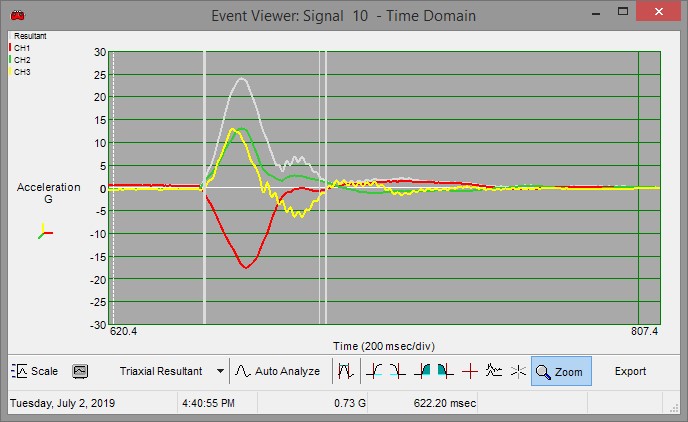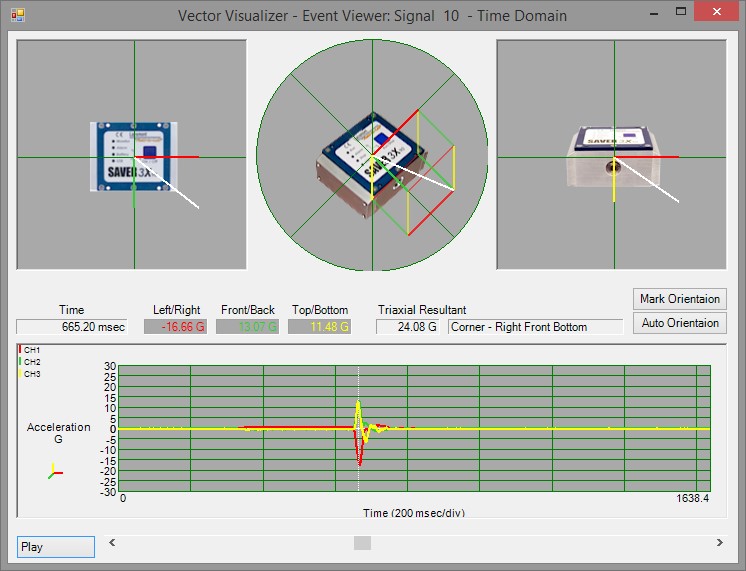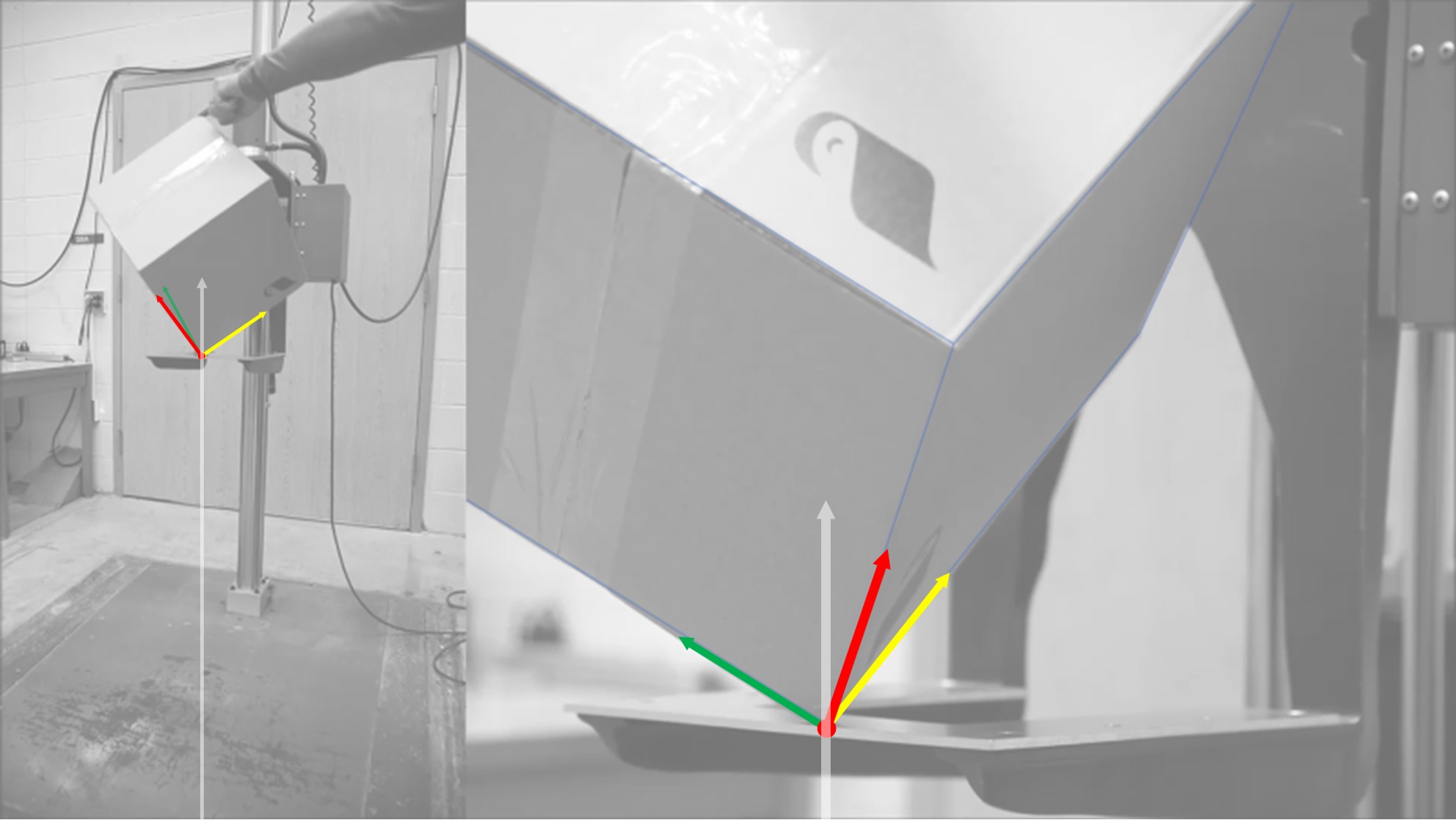All Lansmont SAVER products are full waveform devices. Additionally, all SAVERs utilize internal triaxial accelerometers, which means they measure acceleration in the three translational directions - X, Y, and Z. Another way of typically describing those directions are up-and-down, side-to-side, and front-to-back.
An example of a recorded SAVER event is shown below:

The three channels are displayed, as well as what we call a triaxial resultant (white trace).
The resultant is a summation of the three translational channels, which provides a better descriptor of the overall event severity, as well as providing the direction of the shock input itself.
This is an especially useful tool when events are recorded coming into the SAVER from an edge, or corner. Below is what we call the Vector Visualizer, available in the SaverXware operating software. This is a powerful tool that allows users to visualize how a measured event occurred. You can think of all three colored acceleration channel indicators - and the white resultant - pointing towards the center of the SAVER, where the triaxial accelerometer is located.
The Vector Visualizer window provides three different perspective views of the instrument, as well as overlays of the three acceleration channels and triaxial resultant. In the example below, we can see that the shock input entered into the SAVER from the bottom, right-hand corner – and is reported as such automatically within the software.
Even though the maximum recorded G level on any of the three channels was 16.7G, the resultant actually had a summed G level of 24.1G. That 24G best describes the overall, true severity of the measured event.

Another way to visualize what those three channels represent is to imagine the SAVER inside a box or container. In the image below, the package is about to be dropped in a laboratory.
The colored vector arrows indicate the measurement direction of input associated with each of the SAVER’s internal triaxial accelerometer channels. In this example, the package will be dropped onto its corner, so we need the triaxial resultant to accurately tell us how much acceleration was experienced coming in through that corner of the box/package upon impact with the floor – as indicated by the white arrow.
The summation of all three acceleration channels provides that answer.

Video Of Vector Visualizer
Next Week - Part 4 - What can Instrument Pre-Trigger tell you about an event?